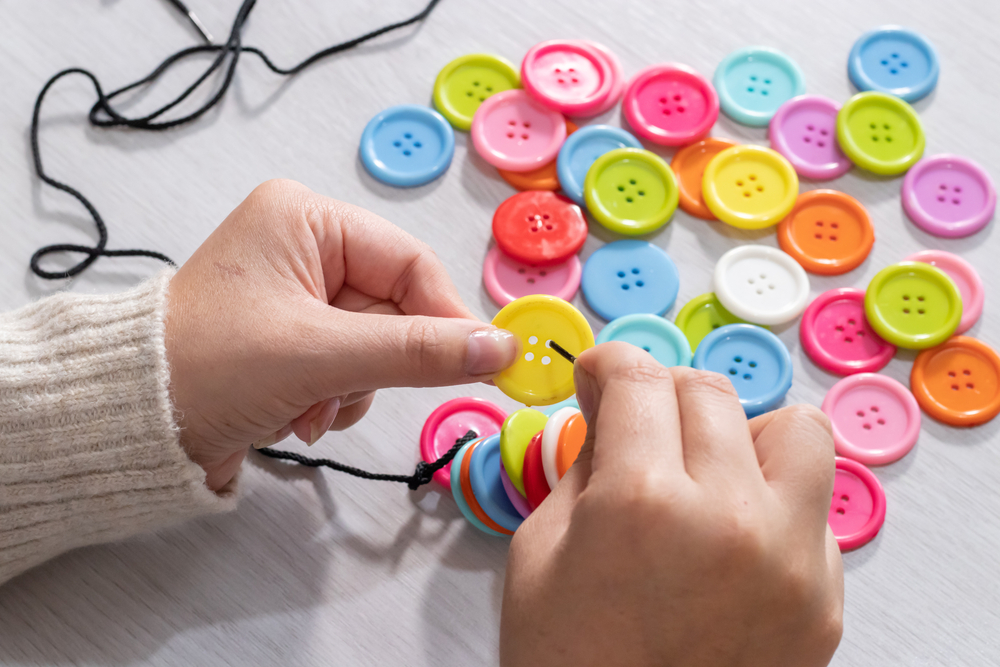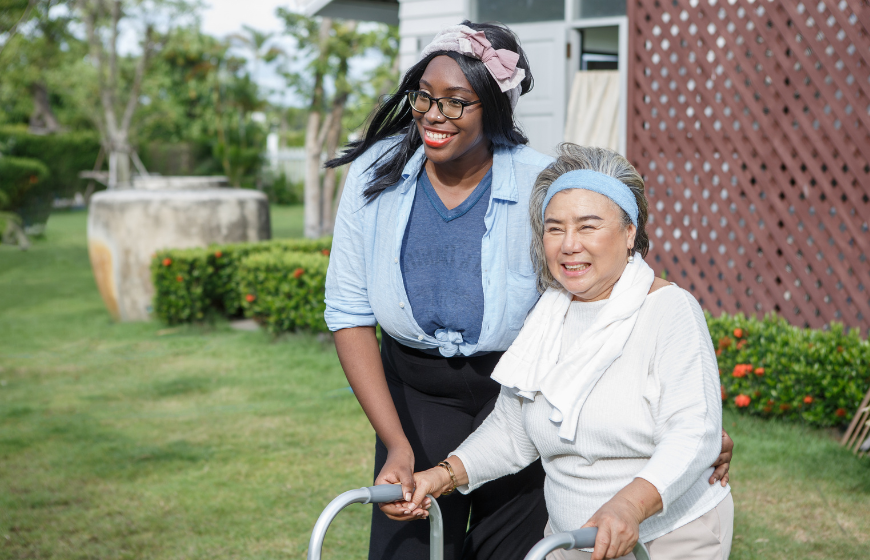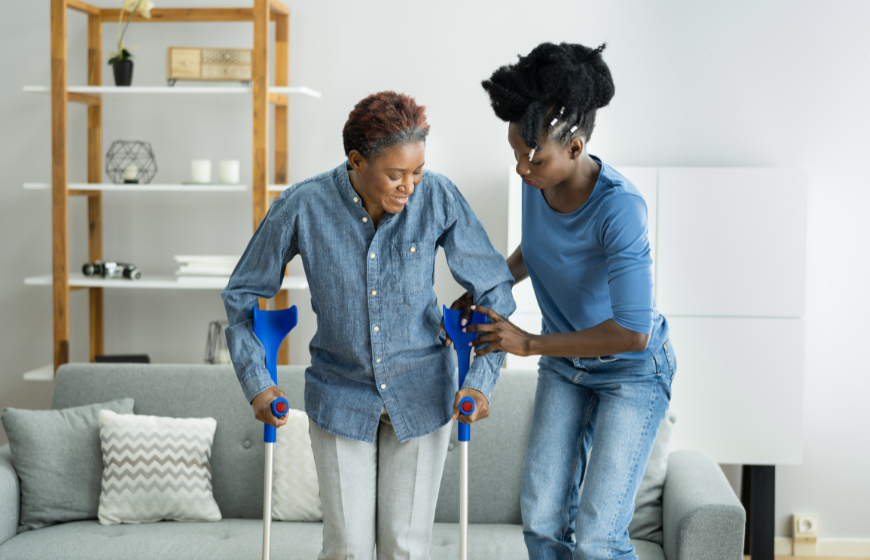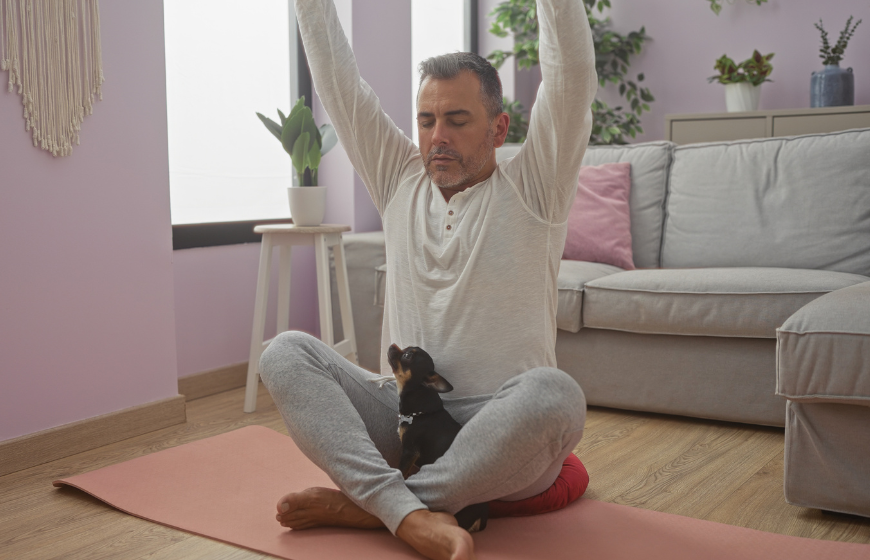Any major medical event can heighten emotions and raise questions. If you or a loved one has suffered a stroke, you’re probably wondering about what caused the stroke and what can be done to avoid another.
However, foremost in your mind is the question of how to recover from a stroke.
The answer can be complicated, but it’s important to note that for most people, recovery is possible.
This guide will go over the steps you can expect in your recovery. The more you know, the more you can prepare for the journey ahead and set yourself up for the best possible outcomes.
What Is a Stroke?
A stroke is a type of brain injury that occurs when something blocks the blood supply to a part of the brain or when a blood vessel in the brain bursts. There are three main types of stroke:
- Ischemic stroke – This is the most common form of stroke. It occurs when the artery that supplies blood to the brain becomes blocked, often by a clot.
- Hemorrhagic stroke – This occurs when an artery in the brain leaks or ruptures. This type of stroke can be caused by conditions such as high blood pressure or aneurysm.
- Transient ischemic attack (TIA) – Commonly referred to as a “mini-stroke,” this refers to a blockage that only lasts for a short period of time. Don’t let the name fool you—TIAs are medical emergencies and are often warning signs for major strokes in the future.
The exact course of your treatment will be determined based on which sort of stroke you suffer from as well as the severity of your stroke.
Recognizing a Stroke
The first step to recovering from a stroke is to recognize it quickly and seek medical attention. The quicker you receive care, the more likely you are to recover. One easy way to remember the potential signs of a stroke is by using the FAST acronym:
- F – Face drooping – If one side of a person’s face is drooping or numb, this could be the sign of a stroke. A quick test is to have the person smile. If the smile is uneven, seek further evaluation from a medical professional.
- A – Arm weakness – A weak or numb arm is another potential stroke indicator. Ask the person to lift both arms. If one drifts down, they may be having a stroke.
- S – Speech difficulty – Slurred speech is another indicator that a stroke may be occurring.
- T – Time to call 911 – If you notice any of the first three indicators, do not wait. The faster you receive medical attention, the better your chances for a positive outcome.
While the FAST acronym is an easy-to-remember way to check symptoms of a stroke, there are other symptoms you can look out for as well:
- Numbness
- Confusion
- Trouble seeing
- Difficulty walking
- Severe headache
Timeline of Recovery
How long to recover from a stroke will differ from person to person. No two recoveries will be exactly the same, but a general timeline can give you a sense of the road ahead.
Stroke recovery takes time and setbacks are to be expected. While that can lead to discouragement, knowing about the possibilities ahead of time can better prepare you so you can maintain a positive outlook.
The First Few Weeks
The average hospital stay after a stroke is five to seven days. During this time, your medical team will be monitoring you and your symptoms. The symptoms you can expect include:
- Cognitive symptoms – Memory problems and trouble speaking are two common issues after a stroke.
- Physical symptoms – Weakness or paralysis of one side can linger after the stroke. You may also have trouble swallowing.
- Emotional symptoms – While much focus will be spent on the physical and cognitive symptoms, it is also important to monitor any emotional symptoms. Depression, impulsivity, and anxiety can be expected.
- Fatigue and trouble sleeping – As your body recovers, you may feel more tired than usual. At the same time, the confusing and emotional experience can make it difficult to rest and sleep.
During this time in the hospital, you and your team will start your rehabilitation therapy. You will need to continue this therapy even after you are discharged.
1-3 Months
This period is when you will see the majority of the gains in your recovery. However, it will not necessarily be easy. Most people need to work hard on their rehabilitation, utilizing both outpatient therapy and at-home work. Some things you may experience include:
- Spontaneous recovery – This occurs when a skill that seemed to be lost suddenly comes back. This is an encouraging sign showing that your brain is figuring out new ways to do things.
- Setbacks – Setbacks are unfortunately common. You need to especially monitor for things like a second stroke, pneumonia, or a heart attack, which would obviously require medical treatment and put your rehabilitation on hold.
6 Months and After
At the six-month mark, most patients have reached a steady state and most recovery gains will already have been realized. However, some patients do continue to recover (though likely at a slower pace) even after six months. It is important to keep all appointments with your medical team and to continue your recovery work to achieve the fullest recovery possible.
Treatments
What sort of treatments can you expect during your recovery and rehabilitation? Techniques will vary based on your needs and the expertise of your team, but some therapies are standard practice. Next, we’ll take a look at common recovery techniques.
The type and frequency of these treatments will be determined by your specific symptoms.
To learn more about comprehensive care solutions for stroke survivors, read our blog posts addressing the difference between palliative care and hospice as well as when someone should be offered palliative care.
Physical Activities
One of the main focuses of rehabilitation is regaining your physical abilities. These exercises may be familiar to many, as they are similar to the types of physical therapy you would do after an injury. However, it is important not to confuse your stroke with a physical injury, as the timelines for recovery and specific exercises will be very different.
Some examples of physical activities that can hasten recovery are:
- Motor-skills exercises – These are exercises to help you improve your coordination and muscle strength. Exercises to help you swallow would also fall under this category.
- Mobility training – Regaining your mobility is a process and you may need to utilize tools such as a wheelchair, walker, or cane as you progress.
- Range-of-motion exercises – One result of a stroke is that you may lose the ability to move certain parts of your body such as an ankle or arm. Exercises focused on the affected area can ease muscle tension and return your range of motion.
Cognitive and Emotional Activities
While it’s easy to focus on the physical abilities that might be lost from a stroke, keep in mind that a stroke is an injury to your brain. That means you can also expect cognitive and emotional issues that arise.
Some examples of exercise that can help you recover these abilities are:
- Occupational therapy – This will focus on helping you complete tasks which you may have lost the ability to do after your stroke. This can range from exercises to help you tie your shoes to adapting your home to your current limitations. Working with an occupational therapist is key to successfully navigating day-to-day activities while you recover.
- Speech therapy – Working to restore any losses in your ability to speak is another important focus. Speech therapy can also address any problems with hearing clearly.
- Psychological therapy – Monitoring your emotional state during your recovery is important since any issues you have emotionally can affect your ability to take on the difficult rehabilitation process. Counseling and medication can help to support you through any emotional issues.
How Many Patients Recover from a Stroke?
The timeline and steps to recover from a stroke can seem daunting.
While a stroke is a major medical event, most people will be able to achieve some level of recovery. However, not all recoveries are the same. Some factors that will play into your outcome are:
- The amount of damage the stroke caused.
- How quickly you received treatment.
- Your age.
- Whether you have other medical conditions that will affect your recovery.
- Your motivation and willingness to do the hard work involved in recovery.
The percentages of patients that recover are as follows:
- Full or near-full recovery – 10%
- Recovery with lasting minor impairments – 25%
- Recovery with moderate to severe impairments that require ongoing care – 40%
- Require long-term care – 10%
Remember to seek out help and support at all stages of recovery so that you can regain your physical and emotional well-being. You don’t have to do it alone.
Help Your Recovery with Alliance Homecare
Recovery can be a long and difficult process, and depending on your situation, you may be able to benefit from home care services. At Alliance, we emphasize compassion, respect and education, training, and skilled care. As a result, our nurses and home caregivers are some of the most knowledgeable medical support staff available.
Recovery is easier when you’re able to do it in familiar surroundings and a caring environment. Our in home nurse care is designed to help you where and when you need it most so that you can be confident you have someone on your side as you follow your path to recovery. Reach out to see if Alliance Homecare can be a help for you.
Sources:
- Centers for Disease Control and Prevention. Types of Stroke. https://www.cdc.gov/stroke/types_of_stroke.htm
- American Stroke Association. Stroke Symptoms. https://www.stroke.org/en/about-stroke/stroke-symptoms
- Healthline. Stroke Recovery: What to Expect. https://www.healthline.com/health/stroke/recovery
- John Hopkins Medicine. Stroke Recovery Timeline. https://www.hopkinsmedicine.org/health/conditions-and-diseases/stroke/stroke-recovery-timeline
- Mayo Clinic. Stroke rehabilitation: What to expect as you recover. https://www.mayoclinic.org/diseases-conditions/stroke/in-depth/stroke-rehabilitation/art-20045172
- NHS. Recovery-Stroke. https://www.nhs.uk/conditions/stroke/recovery/




